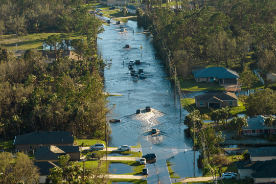Business
Scenario Analysis That Matters Turning IFRS S2/TCFD scenarios into cash-flow impacts.

Scenario analysis has become a central expectation in climate and sustainability reporting, but too often it remains a theoretical exercise, disconnected from the financial decisions that matter most. Both the Task Force on Climate-related Financial Disclosures (TCFD) and the new IFRS S2 standards require companies to stress-test their strategies against climate-related scenarios—yet the real test is whether those scenarios can be translated into meaningful cash-flow impacts that investors, boards, and CFOs can act on.
At its best, scenario analysis helps companies move from abstract narratives about 1.5°C or 2°C pathways to tangible assessments of how transition and physical risks will affect revenues, costs, capital expenditures, and financing. For instance, a utility might model how stricter carbon pricing under a net-zero transition scenario increases operating costs at coal plants while improving the profitability of renewable projects. Similarly, an agribusiness can assess how drought scenarios affect crop yields, supply chain stability, and insurance costs. By expressing these dynamics in terms of cash inflows and outflows, the analysis becomes directly relevant to financial planning and valuation.
The IFRS S2 framework builds on TCFD’s foundation but pushes further toward decision-usefulness. It expects companies not just to describe scenarios but to explain how they affect business models, financial position, and access to capital. This requires integrating scenario outputs into financial models—adjusting assumptions on revenue growth, cost of goods sold, operating margins, or discount rates based on climate variables. For many firms, this means moving beyond sustainability teams and bringing finance functions into the process, ensuring that scenario analysis feeds into budgeting, forecasting, and risk management.
However, common pitfalls undermine the usefulness of scenario analysis. Many companies rely on off-the-shelf scenarios without tailoring them to sector-specific exposures, producing generic insights. Others stop at qualitative descriptions—“higher temperatures may impact operations”—without quantifying the magnitude or timing of impacts. Some firms report rosy outcomes in every scenario, raising questions about credibility. To avoid these traps, companies need to select relevant variables (carbon price, commodity shifts, physical hazard frequency), link them to operational and financial metrics, and disclose the sensitivity of cash flows to these drivers.
Investors increasingly expect comparability and transparency. They want to see which scenarios were chosen (e.g., IEA Net Zero 2050, NGFS orderly vs. disorderly transitions), what assumptions were applied, and how the results tie into capex plans, asset valuations, or impairment tests. Companies that disclose scenario analysis as part of financial statements—rather than as a sustainability appendix—signal maturity and seriousness.
Ultimately, scenario analysis that matters is not about producing glossy charts of possible futures. It is about embedding structured “what if” thinking into the core of financial strategy. Done well, it equips boards and executives with a sharper view of resilience, capital allocation, and shareholder value under climate uncertainty. Done poorly, it risks becoming another compliance exercise that generates reports but not decisions. The difference lies in whether companies can connect climate scenarios to cash flows—and in doing so, turn risk disclosure into a tool for competitive advantage.

At least 20 people killed in Russian glide bomb attack on village in eastern Ukraine

Transition vs. Physical Risk A decision tree for which risk dominates by industry.

Getting Assurance-Ready — Controls and evidence trails for sustainability data.
trending posts

TOP Categories
Google Web Reporters













3 comments
David Bowie
3 hours agoEmily Johnson Cee
2 dayes agoLuis Diaz
September 25, 2025